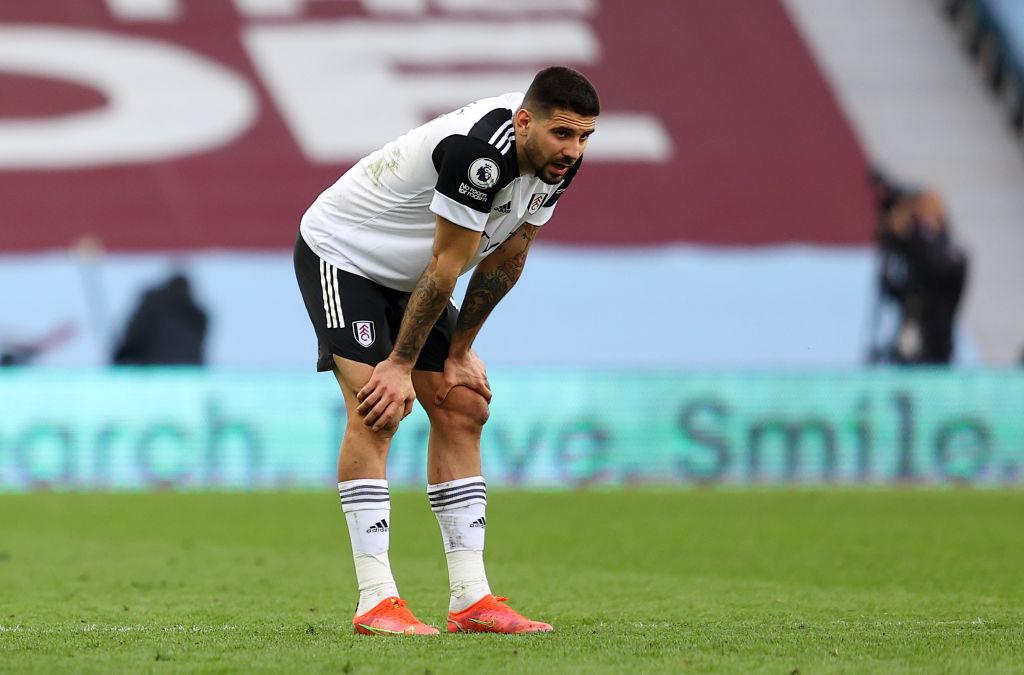In last week's blog I published the verdict of the late Alan Slough on Fulham's disappointing performance in the 1975 FA Cup Final: "We got ourselves into a situation where we thought we could not be beaten."
Undefeated away from home since early December last year, perhaps Scott Parker's squad were also affected by a feeling of invincibility – though the manager surely would have been the last to encourage that?
The Easter weekend had already produced a remarkable victory for West Bromwich Albion and a priceless late goal for Newcastle that gave Steve Bruce's team another point's advantage over Fulham. An away win at Villa Park could still take us above Newcastle on goal difference.
As in quite a few games this season, Fulham started promisingly. Aleksandar Mitrovic, fresh from his Serbian triumphs, proved an instant threat to the Villa defence, supported by Bobby DeCordova-Reid. No goals ensued (Emiliano Martinez was not really tested) but the away team dominated the first half.
Both sides were indulging in petty fouls and just before the interval Mario Lemina made two questionable tackles in his team's penalty area. One of these caused referee Andy Madley to point to the spot but after consultation with VAR and a prolonged study of the incident he changed his mind and the half ended goalless.
Second half
Villa improved in the second period but by the hour mark the game seemed to be heading for a 0-0 draw when Mitrovic seized on a nightmarish error by Tyrone Mings and rolled the ball into an empty net.
In response, Dean Smith sent on Trezeguet and Keinan Davis, substitutions that transformed the match. Mings atoned for his mistake with a precise centre allowing Trezeguet to equalise. Almost immediately Tosin clumsily yielded the ball to Davis and the Egyptian doubled his tally.
With just 10 minutes remaining, Fulham faced an unexpected defeat. Scott Parker gambled on substitutes Josh Onomah and Josh Maja making a similar impact to the Villa changes. Onomah did have a decent try, but Bertrand Traore embarrassed the Fulham defence and created a simple goal for Ollie Watkins. Nine minutes had turned a comfortable victory into a heavy defeat.
Fulham supporters were counting on three or four points from the Leeds and Villa matches. These two losses will increase the pressure on Parker and his players.
Putting Fulham FC on the map
There are still gaps in our knowledge of the early footballers who put Fulham FC on the map.

I have long wanted to know more about Billy Balster (sometimes printed as Bolster), the man standing proudly to one side of the 1887 West London Cup-winning team. Henry Shrimpton, who may have known him personally, wrote in 1950 that Billy 'was an all-round athlete and before taking to soccer was well known in the rugby world, being a Kent County player. Billy went to America and played cricket for Chicago against Lord Hawke's Gentlemen of England team. He was also a first-rate concert artist.'
The improbable sounding cricket match took place on 16 and 17 October 1891. Billy was last man in and did not score before the first innings concluded. Chicago had to follow on and Billy got 13 runs before losing his wicket LBW.
It was hard to make a precise identification from our limited information. Hardly anyone of that name could be found in West London. I wondered if he was the William Bolster, born in Cambridgeshire in 1855, who spent most of his life in Battersea. A few weeks ago, I was able to track down that man's great grandson. An Arsenal fan, he was cordial and helpful but did not for one moment credit that his ancestor had played football for Fulham and cricket for Chicago.
He knew that Billy was still in England for the 1891 census (I had missed this because the numerator had misspelled his name) so it did seem unlikely that he would make the expensive trip to the States in time for the cricket match and return to his Battersea home and family.
I admitted that I would have to go 'back to the drawing board' and it proved much easier than expected because over Easter, an ancestry website allowed free access to its American material. The 1900 US census showed a William Balster living in Chicago, having emigrated from England ten years previously and taken American citizenship. Other US records showed that in June 1891 he had married a fellow Brit called Emily Boswell and was working as a secretary or bookkeeper at the Independent Cracker Machine Co. Sadly, the marriage ended in divorce.
His stated age indicated that he was born around October 1864 and must be William Balster of Plumstead (the Kent connection). Billy's mother died when he was nine and it appears that his father was confined to the workhouse, so William lived with his elder brother Henry and worked as a labourer at Woolwich Arsenal.
I suspect that we will never know why this young man came across London to play for Fulham St Andrew's, nor why he later chose to emigrate.
The Revd Sydney Propert, a counsellor and fitness instructor for the footballers, often advised young men to look overseas for a better life but he would probably have suggested a Commonwealth country rather than the USA. It is hard to trace William's subsequent life because the name was not uncommon in the States, but from what we know already a team of scriptwriters could turn his life a great mini-series on Netflix.
The views expressed in this blog are those of the author and unless specifically stated are not necessarily those of Hammersmith & Fulham Council.
Want to read more news stories like this? Subscribe to our weekly e-news bulletin.

